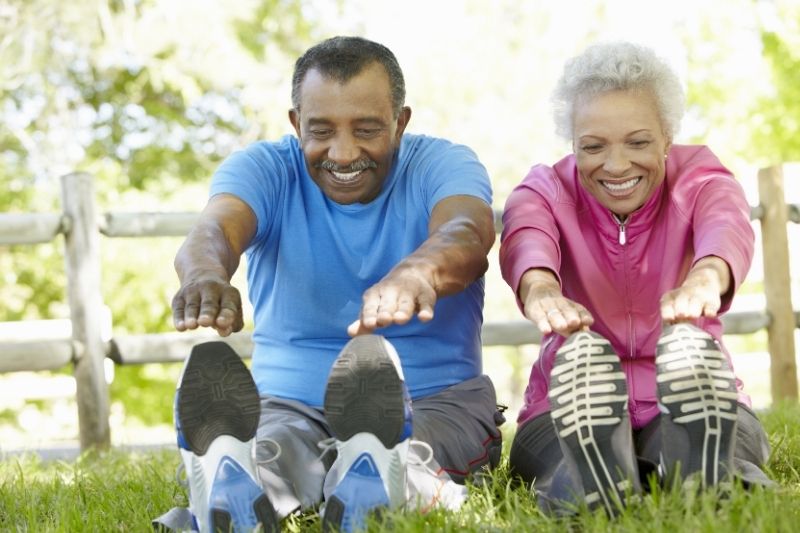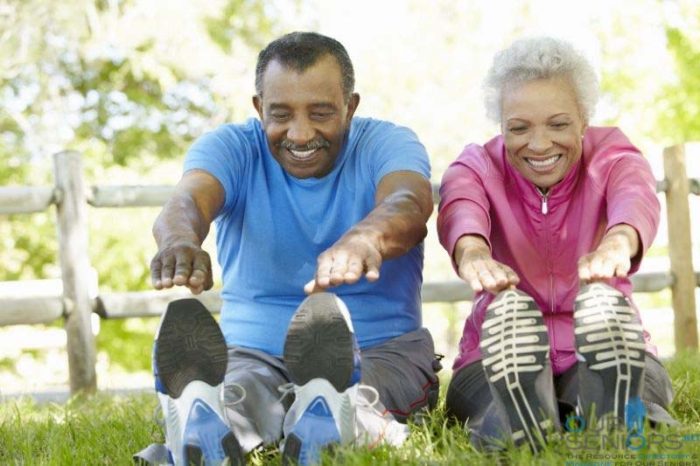
All seniors should take an active interest in exercise because it is one of the most important single things they can do to remain healthy. Unfortunately, arthritis can get in the way due to pain and discomfort. In recent years, several new and highly effective drug therapies have been made available to arthritis patients. These drugs have helped thousands of people, but they are expensive and can sometimes cause serious side effects. Most doctors believe that exercise is the best and most effective non-pharmaceutical therapy for people with arthritis.
It is understandable that the thought of swimming, riding a bike or walking may sometimes seem overwhelming. Painful, stiff joints discourage many people from getting the exercise they need to remain healthy and mobile. Ironically, a proper exercise program will actually help reduce arthritis pain and stiffness. Exercise benefits people with arthritis by increasing strength and flexibility, fighting fatigue and reducing joint pain. It is not the case that moderate movement will worsen your pain and stiffness; it is the lack of movement that will make your joints even more painful and stiff.
Before starting any arthritis exercise program, you should talk to your doctor and understand the limitations you may have. A physical therapist, your doctor or other medical professional can recommend the proper exercises for you, ones which fit both your needs and limitations.
Exercises for arthritis may fall into several categories:
Range of Motion Exercise
These exercises often involve non-strenuous, gentle activity designed to improve joint flexibility and mobility. This can be as simple as spreading and stretching the fingers. Rheumatoid arthritis, especially, affects smaller joints like those in the hands and fingers. Failing to move those joints, although sometimes painful, results in ever less hand mobility. Simply making a fist and then stretching the fingers open as wide as possible can maintain the maximum use of your fingers and hands. Even better, squeeze a rubber or foam ball as hard as you can manage and then stretch the fingers.
The hips and knees are often affected by osteoarthritis, the most common form of arthritis. Range of motion exercise can help to keep these critical joints mobile and may delay the need for joint replacement (hip and knee replacements are now among the most common surgeries).
Strengthening exercises
Designed to develop muscles that can protect and support joints, strengthening routines can improve mobility and prevent further damage to already painful joints. You should get professional advice from a physical therapist or trainer before starting a strength program. FitWorks Perfect Posture is a great place to look with their free virtual evaluations. They are able to make a specific plan for any issues and work in a low-impact way that strengthens muscles and gets the body back in alignment.
Low impact aerobic exercises
Activities like swimming, moderate walking or bicycling on a regular or stationary machine can improve a senior’s overall fitness, as well as build stamina and control weight. Excess weight is a major risk factor for developing osteoarthritis in weight-bearing joints like hips, knees and ankles. A senior starting aerobic exercise of any type should consult their doctor first and try to work up to two to three hours of moderately intense aerobic exercise each week.
Never stress yourself so greatly that you could not carry on a conversation due to breathlessness and keep the impact low. If these activities cause joint or muscle pain, apply warm (not extremely hot) heat treatments.
Yoga and Tai Chi Exercises
Once regarded as fringe activities, yoga and tai chi are now well accepted by physicians, physical therapists and trainers. Yoga and tai chi are systems of postures and motions that can improve balance, flexibility, strength and reduce stress and anxiety.
Most communities in Florida have some organized form of exercise for seniors, often focusing on activities for arthritis and other motion limiting conditions. Check with your local senior center, YMCA or medical center. Many senior assisted living facilities, active senior communities and even memory care living facilities offer organized exercise, including programs for arthritis.

